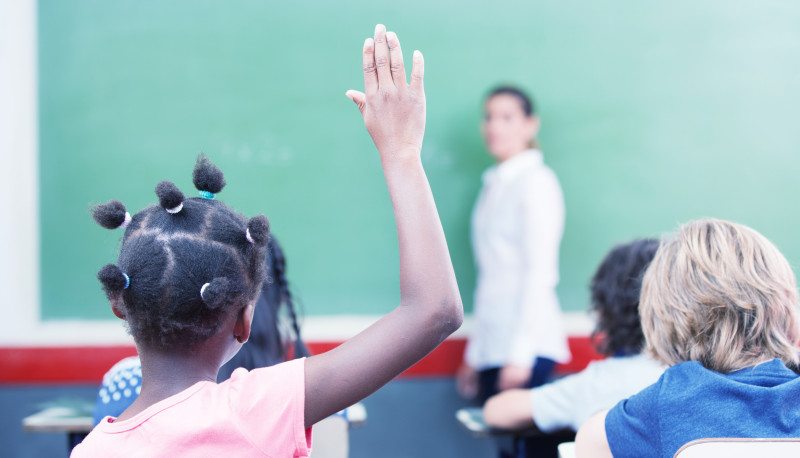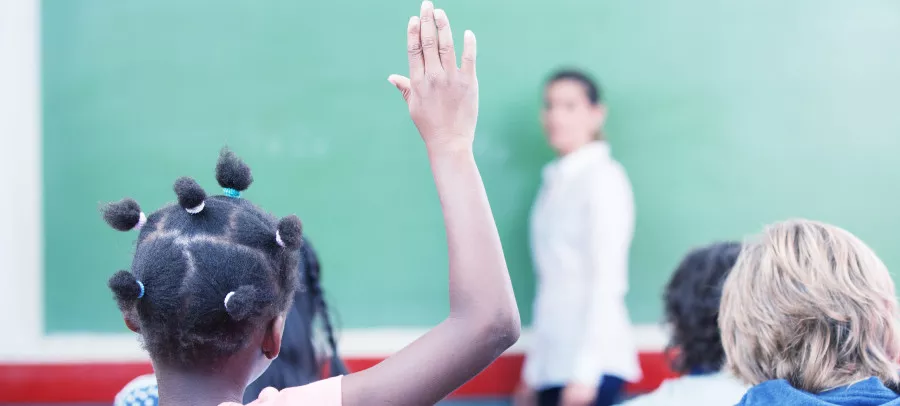 NEA President Lily Eskelsen García addressed the public and press about closing the student achievement gap in a speech at the National Press Club on Monday. The speech was part of a day-long NEA-sponsored symposium titled "Closing the Gaps: A Policy and Practice Conversation to Advance an Opportunity Agenda."
NEA President Lily Eskelsen García addressed the public and press about closing the student achievement gap in a speech at the National Press Club on Monday. The speech was part of a day-long NEA-sponsored symposium titled "Closing the Gaps: A Policy and Practice Conversation to Advance an Opportunity Agenda."
“We have an opportunity to bring our ideas, our solutions, [and] our voices into this debate,” García said.
Although some changes in education policies have been made to help narrow achievement gaps, discrepancies in educational outcomes related to low-income households, English language proficiency, disabilities, and racial minorities persist across the nation.
The Elementary and Secondary Education Act (ESEA), passed in 1965 and reauthorized six times, aimed to help children who live in poverty, but hasn't lived up to its promise. Subsequent updates to the law shifted the focus away from opportunity to a narrow and untie model of accountability.
“[ESEA] was an attempt to say that all children should have the opportunity to learn and it is the reality that all children still do not have the opportunity to learn,” said Garcia.
Now educators and public school supporters are making a collaborative effort to test their ideas and share their experiences in the hope of giving all students the best possible education.
“We know what works in practice, and now what we have to do is take that incredible practice and put it into policy,” Garcia explained. “There is a space for our voice now and we are going to fill that space with our incredible, powerful ideas.”
During the symposium panel discussions, speakers discussed various effective practices and gap-closing strategies - specifically addressing the need for drop-out prevention, meeting the needs of children with disabilities and English language learners and assisting low-income families.
“Over the years the conversation has changed from dropout prevention to increasing the graduation rate to reducing the school to prison pipeline,” said Mavis Ellis, a Pupil Personnel Worker in Montgomery County, MD. “Consistent attendance is key. Poor attendance can start the school to prison pipeline.”
Kisha Davis-Caldwell, director of the National Board for Professional Teaching Standards, spoke about a recent $2.4 million grant from the Kellogg Foundation that will fund a K-3 literacy program in Mississippi and provide funds to recruit and develop NBCTs as literacy coaches. Over the course of the three-year grant, the work aims to benefit up to 30,000 children in the state through summer learning as well as in their regular classrooms during the school yea
“We are using those monies in order to work in states throughout the delta, one of the areas where we know the achievement gaps among Africana American students and students of color are significantly larger than other places in the nation,” explained Caldwell. Under the grant, teachers will work directly with students in their classrooms, as well as with other teachers in their schools and districts, to transform literacy.
Another strategy to close the achievement gap is community schools, which are starting to get national attention.
Ken Zarifis, president of Education Austin, is an outspoken advocate for community schools in Texas, which he says are a successful and proven alternative to punitive test-based accountability in turning around low-performing schools. A community school thrives on a strong network of partnerships between districts, nonprofits and government agencies that provide both academic assistance and health and social services to lower-income students and their families.
"Drop-out prevention, attendance, quality teachers, strong programs, identification in addressing academic needs, teacher led decision making, all are incorporated in the community school model,” Zarifis told the audience at the National Press Club.
With the combined effort of policy experts and educators to lead the effort to design and implement these and other such strategies, García said closing the achievement gap was a reachable goal.
“We are the ones we’ve been waiting for,” she said. “Go, fight, win.”


